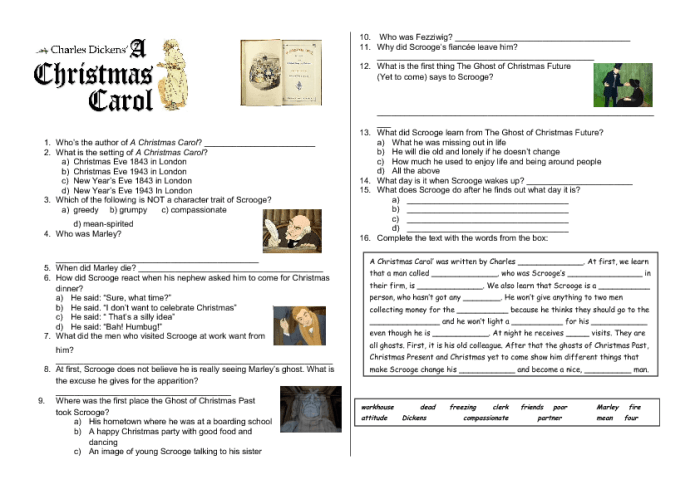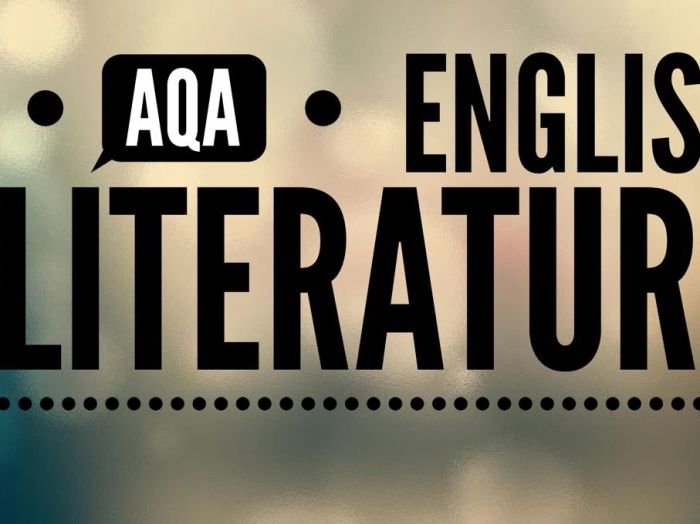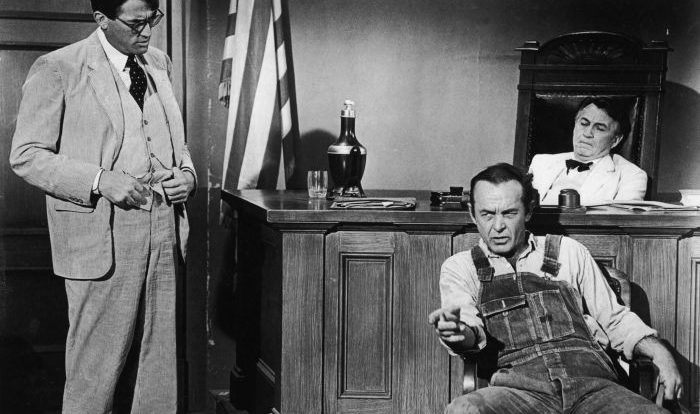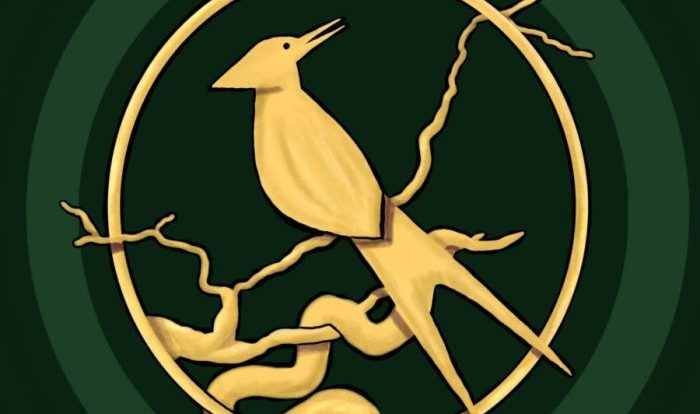Embarking on a journey of literary exploration, we delve into the realm of “A Christmas Carol Comprehension Questions,” an intriguing analysis of Charles Dickens’ timeless masterpiece. This beloved tale, a cornerstone of holiday literature, has captivated generations with its poignant themes and unforgettable characters, making it an enduring source of literary inquiry and appreciation.
Through a comprehensive examination of the story’s intricate elements, this guide unravels the depths of Dickens’ narrative, inviting readers to engage with its profound messages and enduring legacy.
1. Introduction
Charles Dickens’ “A Christmas Carol” is a timeless classic that has captured the hearts of readers for generations. Originally published in 1843, the novella tells the story of Ebenezer Scrooge, a miserly old man who undergoes a profound transformation on Christmas Eve.
Through the guidance of three ghosts, Scrooge is forced to confront his past, present, and future, ultimately leading to his redemption and the rediscovery of the true spirit of Christmas.
2. Character Analysis

Ebenezer Scrooge
Scrooge is the protagonist of the story and embodies the quintessential miser. Initially portrayed as cold, heartless, and selfish, he is haunted by three ghosts on Christmas Eve who show him the error of his ways. Through his journey, Scrooge undergoes a profound transformation, becoming a generous and compassionate man who embraces the true spirit of Christmas.
The Ghosts of Christmas Past, Present, and Future
The three ghosts play a pivotal role in Scrooge’s transformation. The Ghost of Christmas Past takes him on a journey through his childhood and youth, showing him the events that shaped his present self. The Ghost of Christmas Present reveals the joy and happiness that can be found in the present moment, while the Ghost of Christmas Future shows him the dire consequences of his current path.
Together, the ghosts help Scrooge recognize the need for change and inspire his redemption.
3. Themes and Motifs

Redemption
Redemption is a central theme in “A Christmas Carol.” Scrooge’s journey from a miser to a generous and compassionate man serves as a testament to the power of redemption and the transformative nature of the human spirit.
Generosity, A christmas carol comprehension questions
The story emphasizes the importance of generosity and compassion. Through Scrooge’s transformation, Dickens shows that true happiness lies in giving to others and sharing the joy of the Christmas season.
Human Connection
The novella explores the importance of human connection and the need for individuals to care for one another. Scrooge’s isolation and selfishness are ultimately replaced by a sense of community and a desire to help those in need.
Light and Darkness
The story employs the motif of light and darkness to convey its themes. Scrooge’s initial state of darkness and miserliness is contrasted with the light and joy that he experiences after his transformation.
4. Setting and Atmosphere
Setting
The story is set in London during the Victorian era, a time of great social and economic inequality. The setting reflects the harsh realities of life for the poor and the stark contrast between the wealth and poverty that existed in Victorian society.
Atmosphere
Dickens creates a vivid and atmospheric setting through the use of vivid imagery and sensory details. The story is filled with a sense of mystery and the supernatural, creating a unique and unforgettable atmosphere.
5. Symbolism and Allegory
Symbols
The story is rich in symbolism, with many objects and events carrying deeper meanings. For example, the Ghost of Christmas Past’s robe represents the past that weighs heavily on Scrooge, while Scrooge’s counting house symbolizes his obsession with money and material wealth.
Allegory
“A Christmas Carol” can be interpreted as an allegory, a story that has a deeper moral or spiritual meaning. The story can be seen as a representation of the human journey, with Scrooge’s transformation symbolizing the potential for redemption and the importance of embracing the true spirit of Christmas.
6. Literary Techniques
Foreshadowing
Dickens uses foreshadowing throughout the story to create a sense of anticipation and suspense. For example, the description of Scrooge’s knocker as a “goblin” foreshadows the arrival of the Ghost of Christmas Past.
Irony
The story employs irony to highlight the absurdity of Scrooge’s behavior. For example, the fact that Scrooge, a miser who despises Christmas, is visited by the Ghost of Christmas Present creates a sense of irony that underscores the story’s themes.
Humor
Despite its serious themes, the story is also infused with humor. Dickens uses humor to lighten the mood and make the story more accessible to readers of all ages.
7. Historical and Cultural Context

Historical Context
“A Christmas Carol” was written during the Victorian era, a time of great social and economic change. The story reflects the social and economic conditions of the time, including the widespread poverty and the growing gap between the rich and the poor.
Cultural Context
The story is also a product of its cultural context, reflecting the Victorian era’s fascination with the supernatural and the growing popularity of Christmas as a family holiday.
8. Adaptations and Legacy: A Christmas Carol Comprehension Questions
Adaptations
“A Christmas Carol” has been adapted into numerous media, including film, television, and theater. These adaptations have played a significant role in popularizing the story and ensuring its enduring legacy.
Legacy
“A Christmas Carol” remains one of the most beloved and enduring Christmas stories of all time. The story’s timeless themes and characters have resonated with readers for generations, and it continues to be a source of inspiration and joy during the holiday season.
FAQ Summary
What is the significance of the Ghost of Christmas Past?
The Ghost of Christmas Past reveals Ebenezer Scrooge’s past actions and decisions, helping him understand the root of his miserly behavior and providing an opportunity for self-reflection.
How does Scrooge change throughout the story?
Scrooge undergoes a profound transformation from a cold-hearted miser to a generous and compassionate individual, driven by the visits from the three ghosts.
What are the major themes explored in “A Christmas Carol”?
The story explores themes of redemption, generosity, the importance of human connection, and the transformative power of love.

